You know about UCSC's mascot--the slow, humble, neon-yellow banana slug, a choice at once both eccentric and defiant.
You might know about the exceptional astronomy program and the intimate feeling within the campus's individual colleges. You probably have a favorite secret spot deep in the redwoods, or maybe you know UCSC's 25-plus miles of hiking and jogging trails like the back of your hand.
But we suspect there are things you don't know about the 2,000-acre campus nestled in the rolling hills above the Monterey Bay.
You may not know how a goat changed campus policy, that one of the country's best-selling romance novelists went to school at UCSC, or that you may one day have the campus to thank for more powerful online search engines.
In honor of the campus's 43rd year, here are 43 things we bet you didn't know about UC Santa Cruz. We think many of them will surprise and delight you--and maybe even inspire you to send us a few of your own.
Contrary to popular opinion
1. Despite its reputation for having some of the top science programs in the country, the 10 most popular undergraduate degrees last year were psychology, business management economics, literature, politics, history, environmental studies, sociology, anthropology, film and digital media, and community studies.
2. UCSC's history of using narrative evaluations has led many to think the campus has never issued grades. In fact, faculty voted in 2001 to issue grades--in addition to the distinctive narrative system.
3. Huge lecture classes are the norm at most public universities, but at UCSC, 72 percent of upper-division courses and 58 percent of lower-division courses have fewer than 30 students.
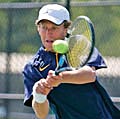
Courtesy of UCSC Athletics
4. Firmly committed to NCAA Division III status, UCSC isn't considered a sports powerhouse. But there are teams successfully competing at the national level; for example, men's tennis was the first D-III team to win both an indoor and outdoor tennis championship in the same year. Under coach Bob Hansen, the UCSC men's tennis team has won a total of six national championships.
5. Despite a budget that is about half the size of similar schools, UCSC's athletics program counted 15 All-American athletes last year.
Nurturing brainiacs
6. Starting from very modest beginnings in the early 1980s, UCSC's Linguistics Department has grown to be an internationally recognized force in linguistic theory. Its undergraduate program is ranked No. 1 in North America, and its graduate program is in the top five. Its graduates are sought after by high-tech companies for developing intelligent search engines, more-intelligent dialog systems, better voice recognition and synthesis systems, and increasingly, in the key areas of naming and branding.

Courtesy of Wentai Liu
7. Work being done at UCSC may one day allow the blind to see. Clinical trials are under way for an artificial retina developed by bioelectronics engineer Wentai Liu and collaborators. Ten patients are enrolled in the U.S. trial and have received the new implant.
8. Military strategists at U.S. Central Command invited environmental studies professor Alan Richards to brief top Pentagon officials about the war in Iraq.
9. In 1984, three UCSC cosmologists and a British astronomer published a paper detailing their theory of Cold Dark Matter, which explained the existence of an invisible form of matter that can be detected only through its gravitational effects on visible matter in space. Today, their theory is the basis for the modern picture of structure formation in the universe. The scientists were Martin Rees (now the royal astronomer of Britain), Joel Primack, Sandra Faber, and the campus's newest chancellor, George Blumenthal.
10. A UCSC professor found a silver lining in a failed effort to create an AIDS vaccine. Phillip Berman, chair of biomolecular engineering, helped develop an HIV data browser that gives researchers access to data from the vaccine's clinical trials that may help them better understand how the virus evolves and causes new infections.
11. UCSC physicists and astronomers are among the most respected in the world. The campus was ranked first in the country for the impact of its faculty in the field of physics and fifth in space sciences for 2007. The newsletter Science Watch reported that a study of the number of times a published paper is cited by other researchers--a measure of important findings and ideas--put UCSC's faculty on top.
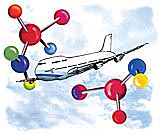
Peter Stults illustration
12. Plane land right on time? You may have UCSC to thank for that some day. UCSC is managing a 10-year, $330 million national research program under an agreement between NASA and UC to work on human space exploration, air traffic management, and nanotechnology. Among projects at the University Affiliated Research Center at Moffett Field is software development that will help air traffic controllers reduce delays and increase safety for air travelers.
13. UCSC astronomer Jerry Nelson helped design the world's largest optical telescopes--the twin Keck Telescopes in Hawaii. Now, Nelson is project scientist for an even bigger telescope, one that will allow astronomers to look back in time to when the first stars and galaxies were forming. The new telescope will have a 30-meter mirror, providing 10 times the light-gathering area of each of the Kecks.
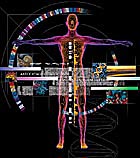
Thom Marchionna illustration
14. In 2000, UCSC researchers were the first to assemble the DNA sequence of the human genome and make it publicly available. Today, thousands of biomedical researchers worldwide use UCSC's Genome Browser in their work to uncover the causes of diseases and develop treatments.
15. If you want to work faster, researchers at UCSC learned it helps to get a robot. The campus opened a Chemical Screening Center in 2007 that uses six robots and a library of 55,000 compounds to test chemical compounds for use in treating cancer, malaria, Parkinson's disease, and inflammation, among other ailments. The robots can help perform up to 30,000 experiments a day.
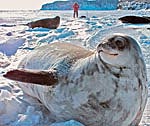
Courtesy of Terrie Williams
16. Studying how the ungainly looking Weddell seal can hold its breath for as long as 90 minutes under the Antarctic sea ice may have implications for understanding stroke and aging in humans. A study led by UCSC professor of ecology and evolutionary biology Terrie Williams is looking at how these seals protect themselves from the effects of low levels of oxygen.
17. UCSC has garnered $16 million in funding for its stem cell research center, which is doing studies that have the potential to help treat stroke, spinal cord injuries, neurodegenerative diseases, and certain heart diseases and cancers.
Alumni aim high
18. Five UCSC alumni have won Pulitzer Prizes. Washington Post reporter and Merrill College alumna Dana Priest won Pulitzers in 2006 and 2008 for reporting on the government's "black site" prisons and the mistreatment of wounded veterans at Walter Reed Army Medical Center. Hector Tobar, a Los Angeles Times reporter, won a Pulitzer in 1992 for coverage of the L.A. riots; Laurie Garrett won in 1996 for her reporting on the Ebola virus outbreak in Zaire; Annie Wells won in 1997 for her photo of a California flood victim; and Associated Press National Writer Martha Mendoza won a Pulitzer in 2000 for an investigative story about the massacre of South Korean refugees by the U.S. military during the Korean War.
19. Since the campus opened 43 years ago, 638 UCSC alumni have heeded the call to work in developing countries for the Peace Corps. The number puts UCSC sixth in ranking among medium-sized schools for the number of alumni it has sent to the Peace Corps.
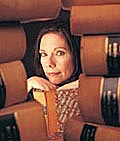
Rex Rystedt photo
20. One of the country's most prolific writers, with 23 million copies of her books in print, graduated from UCSC. Best-selling romance novelist Jayne Ann Krentz (Stevenson '70), who also writes under the names Amanda Quick and Jayne Castle, even included the work of one of her favorite professors, G. William Domhoff, in her 2004 novel Falling Awake.
21. NPR's famous duo, the Kitchen Sisters, Nikki Silva (Porter '73) and Davia Nelson (Stevenson '75), are graduates of UCSC. Over the years, the two women have attracted devoted listeners to several series, including Lost & Found Sound, Hidden Kitchens, and the Sonic Memorial Project, an audio archive of the World Trade Center.
Legend has it
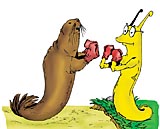
Peter Stults illustration
22. UCSC's famous banana slug mascot almost didn't survive the '80s. Back when the university joined the NCAA, the chancellor and a group of student athletes changed the campus mascot to the sea lion, figuring a slimy yellow slug didn't have the cachet they wanted. But students revolted and, in a 1986 referendum, voted by a 15-to-1 margin to keep the banana slug, thereby guaranteeing UCSC would always join the Whittier Poets and the Ohio Wesleyan Battling Bishops on the list of most unusual mascots in the country.
23. When the UC Regents were considering a site for a new Central Coast campus, the story goes, they considered possible locations in the Almaden Valley in Santa Clara County as well as Santa Cruz. But coming over the Santa Cruz Mountains on a blistering summer day, they felt the cool ocean breezes and picked the Cowell Ranch property in Santa Cruz.

Linda Knudson illustration
24. The reason dogs aren't allowed on campus is due, in part, to a goat named Samantha. Samantha, who had become besotted with a police horse named Sam and was its constant companion, was killed by a big Shepherd/Lab mix whose owner had brought it to campus for a run. The campus was already considering a no-dog policy, but Samantha's 1978 death was the last straw. You can still see Samantha's gravestone on a hill on the left side of Coolidge Drive and signs that warn against bringing dogs to the campus.
25. UCSC has a long history of protests, but one had an especially ignominious ending. A protest over People's Park in Berkeley had brought a camp-in to the lawn of University House, and administrators had spent hours in negotiations, finally persuading campers to leave. But as protesters packed up, then-Chancellor Dean McHenry decided to take matters into his own hands and turned the sprinklers on the protesters. Needless to say, negotiators were quickly back at square one.
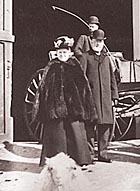
Courtesy of UCSC Special Collections
26. Over the years, reports of ghostly apparitions on a fire road below Cowell College have prompted the area to be named Haunted Meadow. It was in that area on May 14, 1903, that Sarah Agnes Cowell was killed when she was thrown from a buggy after the horse bolted.
27. Humans first arrived on what is now the campus 12,000-16,000 years ago.
28. Within the campus boundaries are at least 50 sinkholes, dozens of springs, a number of creeks that stop abruptly and disappear underground, and two small caves. This type of topography, called karst, is common in some parts of the world but rare in the western United States.
Really special collections
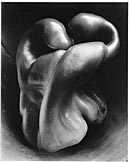
Courtesy of UCSC Special Collections
29. The largest holding of Edward Weston photographs in the country is in the University Library's Special Collections Department. Over the years, the library has lent a number of the influential Central Coast photographer's 900 project prints to institutions such as the Metropolitan Museum of Art in New York and the San Francisco Museum of Art.
30. Deadheads may one day be making pilgrimages to UCSC Library's Special Collections Department--as they once did to the iconic Fillmore auditorium in San Francisco. The famous American jam band donated all of its memorabilia, from stage props to original documents and tie-dyed T-shirts, to UCSC, where it will be housed in a room appropriately dubbed Dead Central.
31. When avant-garde composer John Cage wasn't creating music, he was hunting for mushrooms. The celebrated composer's entire mycological collection, including field guides and a mushroom tie he wore, is held by the University Library's Special Collections Department.
32. A lot of what happens in UCSC's science and engineering departments may seem like science fiction. But if you're looking for real science fiction, you'll find some of the most famous works of the genre archived at McHenry Library. Hugo Award-winning science fiction writer Robert Heinlein--author of Stranger in a Strange Land, Starship Troopers, and other classics--lived in Santa Cruz for two decades and was one of the first "friends" of McHenry Library. The author's complete archive, including original manuscripts, is available at UCSC's Special Collections.
Fascinating factoids
33. Among all U.S. engineering schools, UCSC ranked third in the percentage of masters degrees awarded to women. In 2007, 44.2 percent of master's degrees awarded by UCSC's Baskin School of Engineering went to women.
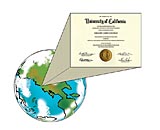
Peter Stults illustration
34. More than 77,340 degrees have been awarded at UC Santa Cruz since its first graduating class in 1967.
35. Thirty-six percent of last year's freshman class were the first in their families to attend college.
36. The UCSC campus is home to more than 500 plant species, an extraordinary level of diversity on its 2,000 acres.
37. UCSC started a very popular computer game design major in 2006, the first of its kind in the UC system.
38. UCSC athletic teams have taunted opposing teams by wearing T-shirts with the slogan, "Banana Slugs-No Known Predators." But that's not exactly true. On campus, known predators include California giant salamanders, garter snakes, shrews, and raccoons. Even humans have been known to eat banana slugs, in emergencies.
Growing greener
39. More than 1,000 graduates of the Apprenticeship in Ecological Horticulture have fanned out around the globe, cultivating the seeds of sustainability.
40. Per capita campus water consumption has fallen 40 percent since the 1980s as a result of conservation efforts.
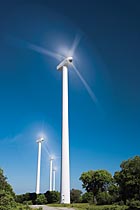
41. UCSC buys enough renewable power certificates to offset 100 percent of the electricity that powers the campus, making UCSC the sixth-largest campus purchaser of "green power" in the country, according to the EPA.
42. Since their introduction on campus in fall 2007, Zipcars have become so popular that the UCSC fleet is the best-utilized and fastest-growing car-share program of any university in the country.
43. About a quarter of the produce served on campus is certified organic, and approximately half of that comes from local farmers.
Got an "unknown" of your own? Contact us at review@ucsc.edu.
Author Peggy Townsend is a Santa Cruz writer whose son attends UCSC. Contributing illustrator Peter Stults is a UCSC alumnus (Merrill '04).


